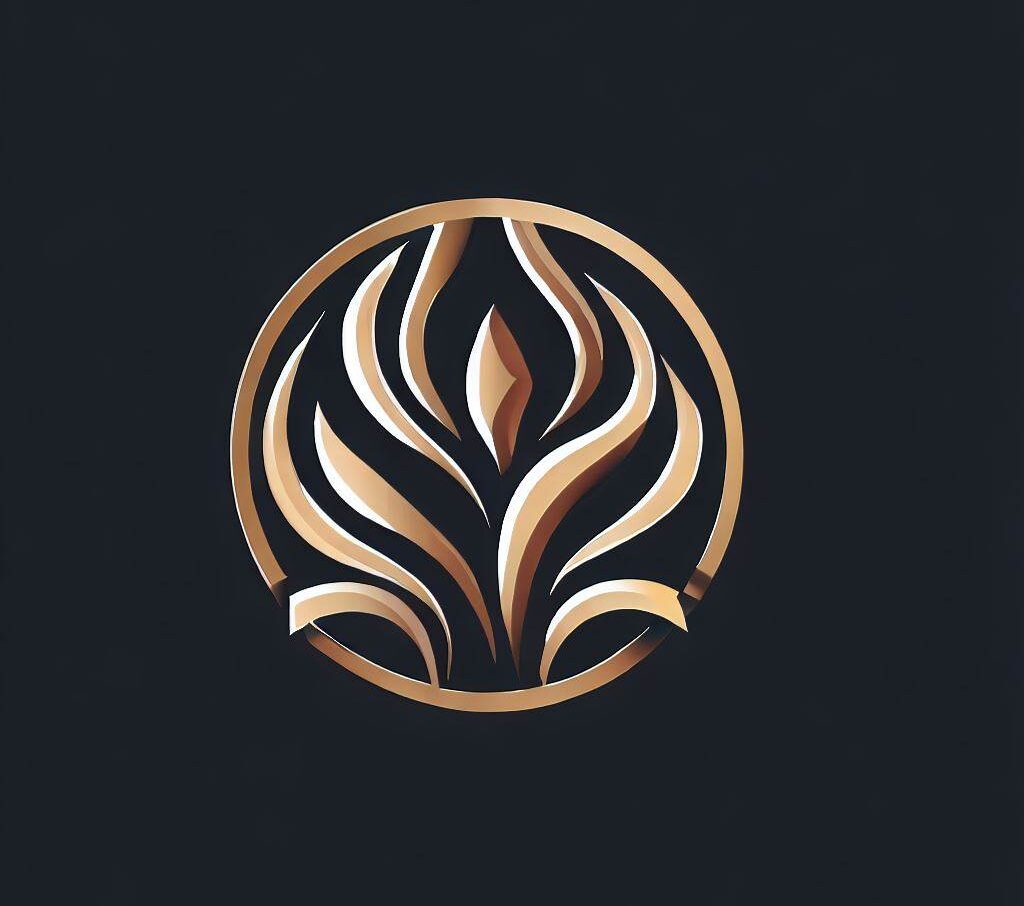As a journalist, I’ve always been interested in exploring the rich symbolism present in religious texts. In this article, we’ll be taking a closer look at the biblical meaning of green and its significance in a religious context. Green holds a special place in the Bible, representing renewal, life, and prosperity in various passages.
We will delve into the symbolism of green in the Bible and explore its spiritual meaning. Additionally, we’ll examine how green is represented in dreams and its connection to divinity. Join me as we explore the significance of the color green in biblical context.
Key Takeaways:
- The color green holds profound biblical meaning and is rich in symbolism within Christianity and religious texts.
- Green represents renewal, life, prosperity, and divinity in various passages of the Bible.
- The symbolism of green is not limited to religious texts, but can also be found in dreams.
The Symbolism of Green in Biblical Texts
When it comes to interpreting color symbolism in the Bible, green holds its own unique meaning. The color green appears throughout religious texts and is often associated with growth, fertility, and freshness.
In Christianity, green is used to represent new life and resurrection. The color is also often associated with the season of spring, which symbolizes new beginnings and new growth.
Green is also the color of nature, which is often described as God’s creation. This connection to nature makes green a color of purity, and some religious texts use green to describe the Garden of Eden, where Adam and Eve lived in a state of innocence before the fall.
The biblical interpretation of the color green extends beyond its association with nature and the changing seasons. Green is also used in reference to prosperity and wealth. In the book of Psalms, for example, it says, “The righteous will flourish like a palm tree, they will grow like a cedar of Lebanon; planted in the house of the Lord, they will flourish in the courts of our God. They will still bear fruit in old age, they will stay fresh and green.” (Psalm 92:12-14, NIV)
This passage compares the righteous to flourishing plants and trees, using the color green to represent their ongoing prosperity and vitality.
Green is also mentioned in the book of Revelation, where it is used to describe the emerald rainbow around the throne of God: “And he that sat was to look upon like a jasper and a sardine stone: and there was a rainbow round about the throne, in sight like unto an emerald.” (Revelation 4:3, KJV)
Overall, the biblical interpretation of the color green is complex and multifaceted, with different meanings depending on the context in which it appears. Green can be used to represent new life, nature and God’s creation, prosperity and abundance, and much more.
Green as a Symbol of Life and Renewal
The color green is often used to symbolize life, growth, and renewal in biblical passages. This is seen in the story of Noah’s Ark, where the dove brings back an olive branch, indicating the end of the flood and the beginning of new life. Similarly, in Psalm 23, green pastures are described as a place of rest and nourishment.
In the book of Ezekiel, a vision of the restoration of Israel is depicted with the image of a river flowing from the temple, bringing life to the barren lands. The river is said to be surrounded by trees that bear fruit and have leaves that never wither, a symbol of eternal life and continuous renewal.
The spiritual meaning of green in the Bible is not limited to the physical realm but also extends to the spiritual realm. Green is associated with spiritual growth, the process of renewing our minds and transforming our hearts to be more like Christ.
Therefore, when we see the color green in biblical passages, we can interpret it as a symbol of hope, renewal, and a reminder of God’s continuous work in our lives.
Green as a Symbol of Prosperity and Abundance
The color green is referenced in the Bible as a symbol of prosperity and abundance. In Psalm 52:8, it says “But I am like a green olive tree in the house of God; I trust in the mercy of God forever and ever.” Here, the use of the word green signifies a thriving or flourishing condition. The olive tree is a symbol of prosperity and wealth, and its green leaves represent abundance.
Additionally, in Proverbs 11:28, it says “Those who trust in their riches will fall, but the righteous will thrive like a green leaf.” This passage emphasizes that true wealth comes from righteousness and a life lived in accordance with God’s will.
Throughout the Bible, the color green is used to represent the bounty of nature and God’s provision for his people. In the book of Jeremiah, it says “Blessed is the man who trusts in the Lord, and whose hope is the Lord. For he shall be like a tree planted by the waters, which spreads out its roots by the river, and will not fear when heat comes; but its leaf will be green, and will not be anxious in the year of drought, nor will cease from yielding fruit” (Jeremiah 17:7-8). This passage illustrates that those who trust in God will have an abundance of blessings, symbolized by the evergreen tree.
In conclusion, the color green holds a significant religious meaning in the Bible. Its association with prosperity and abundance reminds us that true wealth comes from God’s provision and living a righteous life. By understanding the biblical references to the color green and its religious significance, we can deepen our spiritual connection and trust in God’s provision for our lives.
Green Symbolism in Dreams
Have you ever had a dream where you saw the color green? Dreams are often considered a reflection of our subconscious mind, and the color green in dreams can have significant spiritual meaning.
Green is commonly associated with growth and renewal, so if you see green in your dream, it may signify new beginnings or personal growth on a spiritual level. It can also symbolize healing, as green is a color often associated with health and well-being.
Green can also represent balance and harmony. If you see green in your dream, it may be a sign that you need to focus on finding balance in your life or in your spiritual practices.
Alternatively, if you are dreaming of a specific object or item that is green, it can hold additional meaning. For example, if you dream of a green plant, it may signify abundance and prosperity, as plants are often associated with growth and fertility.
Overall, the symbolism of green in dreams can have various interpretations, depending on the context of the dream and personal experiences. However, it is a color often associated with growth, renewal, healing, and balance, all of which hold spiritual significance.
Connection of Green to Divinity
Green is a color often associated with divinity in various religious practices and beliefs.
In Christianity, green is symbolic of eternal life and represents the growth and renewal of the resurrection. This connection to divinity is further highlighted by the use of green vestments in the liturgy during Ordinary Time, which represents the growth of the Church.
In Hinduism, green is considered a sacred color and associated with the heart chakra, representing love, empathy, and compassion. It is also believed to represent the divine energy of Lord Vishnu and the goddess of prosperity, Goddess Lakshmi.
Similarly, in Islam, green is symbolic of Paradise and is believed to be the favorite color of Prophet Muhammad. Green is also associated with spring, a time of renewal, and has been used in Islamic art to represent life and growth.
The connection between the color green and divinity is not limited to these religions. In fact, many cultures and belief systems throughout history have associated green with divine entities and spiritual power.
The spiritual significance of green is also reflected in its healing properties. The color green is believed to promote emotional and physical healing, which is why it is often used in holistic treatments and therapies.
In conclusion, the connection between green and divinity is an important aspect of numerous religious practices and beliefs. Understanding the spiritual significance of green allows us to appreciate its significance and deepen our spiritual connection.
Green as a Color of Healing and Restoration
Green is often associated with healing and restoration in spiritual contexts. In biblical passages, green is used to symbolize growth, renewal, and vitality. These symbolic meanings make green an important color in religious rituals and practices.
Many people believe that green possesses healing properties, and it is often used in alternative medicine practices. The color is said to have a calming effect on the body and mind and is thought to be beneficial for eye health and relaxation.
Green is also believed to promote emotional healing and balance. In color therapy, green is used to alleviate stress and anxiety and to promote feelings of harmony and tranquility.
Religious practices also incorporate green in healing rituals. In some cultures, green candles are burned to promote physical healing and well-being. In others, green stones or crystals are used in energy healing practices to balance and energize the body.
Throughout history, green has been a symbol of hope and renewal. In times of sickness or hardship, wearing or surrounding oneself with the color green is believed to bring comfort and positive energy.
Incorporating the color green into daily life can promote healing and restoration for both the body and mind. Whether through nature, alternative medicine, or spiritual practices, the color green holds a significant place as a symbol of healing and renewal.
Green in Symbolic Art and Religious Iconography
Green symbolism holds significant meaning in art and religious iconography throughout history. From the intricate mosaics in ancient churches to the stained-glass windows of modern cathedrals, the color green is a prominent feature in religious art.
In Christian art, the color green typically represents the resurrection of Christ and the eternal life that comes with it. It is often used to depict the Garden of Eden or Jesus’ triumph over death and sin. In Renaissance art, green was associated with fertility and represented the flourishing of life, particularly in depictions of the Virgin Mary.
Aside from its religious significance, the color green was also used in art to convey wealth and prosperity. During the Renaissance, wealthy patrons often commissioned portraits showing themselves surrounded by lush green foliage as a symbol of their prosperity.
Islamic art also heavily uses green symbolism, with the color representing paradise, growth, and fertility. In Persian and Mughal art, green is often used to depict paradise gardens, signifying an oasis of life and beauty.
Overall, the use of green in symbolic art and religious iconography varies across cultures and time periods, but consistently holds deep spiritual significance. Whether representing renewal, prosperity, or paradise, the color green remains a powerful symbol in religious artwork.
Conclusion
In conclusion, I have explored the biblical interpretation of the color green and its symbolism in Christianity and religious texts. The significance of the color green in the Bible goes beyond its association with nature, growth, and fertility. Its spiritual meaning is deeply rooted in its representation of life, renewal, prosperity, divinity, and healing.
Understanding the symbolism of green in the Bible provides us with a better understanding of the role that the color plays in religious rituals and practices. It allows individuals to deepen their spiritual connection and further appreciate the importance of the color green in a religious context.
Many religious texts and artistic depictions utilize the color green to convey their themes and messages. This use of green in symbolic art and religious iconography adds to the complexity and richness of its symbolism, making it a color of great significance in the spiritual realm.
Overall, the biblical interpretation of the color green provides a fascinating insight into the spiritual world and its connection to nature. Its symbolism in Christianity and religious texts is a reminder of the importance of life, growth, and renewal in our lives.
FAQ
Q: What is the biblical meaning of green?
A: Green holds a significant symbolic meaning in the Bible, representing themes of life, growth, prosperity, and divinity.
Q: Where can I find references to the color green in the Bible?
A: The color green is mentioned in various biblical texts, particularly in passages that discuss nature, vegetation, and spiritual symbolism.
Q: What does green symbolize in Christianity?
A: In Christianity, green symbolizes life, renewal, and the abundant blessings of God. It is often associated with the resurrection of Jesus and the hope of eternal life.
Q: Does green have any significance beyond biblical texts?
A: Yes, green symbolism extends beyond the Bible and can also be found in dreams, art, and religious iconography, representing themes of healing, restoration, and divine connection.
Q: Is there a specific religious significance to the color green?
A: Green is considered a sacred color in many religious practices and beliefs. It is often associated with divine entities, spiritual growth, and the healing powers of nature.
Q: Can green be considered a color of healing?
A: Yes, green is believed to possess healing properties and is often associated with rejuvenation, vitality, and the restoration of balance and harmony.
Q: How is green depicted in symbolic art and religious iconography?
A: Green is frequently used in symbolic art and religious iconography to represent spiritual concepts such as fertility, abundance, and the presence of divinity.
Q: What is the significance of understanding the biblical interpretation of the color green?
A: Understanding the biblical meaning of green allows us to have a deeper appreciation for its symbolism in Christianity and spiritual contexts. It helps us connect with the themes of life, renewal, and divine blessings.






